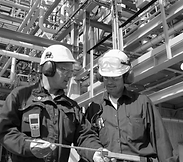Engineering and Technology Quarterly Reviews
ISSN 2622-9374




Published: 16 November 2020
Becoming Incomplete House: the Environmental Implication of the Traditional Balinese House Transformation in Tourism Area
I Dewa Gede Agung Diasana Putra
Udayana University, Indonesia

Download Full-Text Pdf
10.5281/zenodo.4273679
Pages: 74-83
Keywords: Rural-Urban Interface, Traditional Balinese House, Environmental Implication, Transformation
Abstract
The traditional Balinese house in rural areas is designed to optimize the use of available resources, to minimize energy consumption, and to provide spaces for garbage processing and biodiversity. However, the change of rural to become urban areas in tourism areas is an interesting phenomenon. In this phenomenon, the use of house as tourist facilities and the increase of occupants in the house have caused the changes in its physical configurations in which the house becomes an incomplete house since some spaces are transformed into tourist facilities. The increase of its building density also affects many components of the environmental aspects in the house including energy consumption. The aim of this paper is to demonstrate this environmental implication especially energy consumption in the rural-urban interface areas. This aspect in a number of houses transformed for tourist facilities has been investigated through utility meter data collection. Architectural investigation and interviews were then used to consolidate memory and to reconstruct the spatial stories of the house. The transformed houses were selected randomly. This study states that the transformation has affected the use of natural resources in the house. The transformed houses are the owner’s attempts to demonstrate the improvement of their social status.
References
Badan Standarnisasi Nasional (BSN). 2008, SNI (Sandar Nasional Indonesia / Indonesian National Standard) no 3242 tentang Pengelolaan Sampah di Permukiman, Jakarta: BSN.
Badan Pusat Statistik (BPS) Bali. 2007-11, Bali in Figure 2007-11, Denpasar: BPS – The Bali Statistics Bureau.
Badan Pusat Statistik (BPS) Bali. 2011, Bali in Figure 2011, Denpasar: BPS – The Bali Statistics Bureau.
Covarrubias, M. 1974, Island of Bali, Kualalumpur: Oxford University Press.
Geertz, H. and Geertz, C. 1975, Kinship in Bali, Chicago: the University of Chicago Press.
Lefebvre, H. 2000, Everyday Life in the Modern World (translated by Sacha Rabinovitch), London: Continuum
Gelebet, I N. 1986, Arsitektur Tradisional Daerah Bali. Denpasar: Departemen Pendidikan dan Kebudayaan, Proyek
International Gas Union (IGU). 2012, Natural Gas Conversion Pocketbook, available at http//agnatural.pt/documentos/ver/natural-gas-conversion-pocketbook, accessed at 1 November 2013.
Kementerian Energi dan Sumber Daya Mineral Republik Indonesia. 2011, Konversi Minyak Tanah ke LPG Lebih Murah Lebih Bersih, available at http://www.esdm.go.id/berita/artikel/56-artikel/4122-konversi-minyak-tanah-ke-lpg-lebih-murah-lebih-bersih.html, accessed at 1 November 2013.
Lombard, L. P., Ortiz, J. and Pot, C. 2008, “A review on buildings energy consumption”, Energy and Building, Vol. 40, pp. 394-398.
Organikbali.com. 2013, SIMANTRI Menuju System Pertanian Organik Terintegrasi, available at http/organicbali.com, accessed on 28 November 2013.
Permana, A.S. and Kumar, R.P.S. 2008, Understanding energy consumption pattern of households in different development forms: A comparative study in Bandung City, Indonesia.
Poerbo, H. 1992, Utilitas Bangunan: buku pintar untuk mahasiswa arsitektur –sipil, Jakarta: Penerbit Djambatan.
Powell, H. 1989, the Last Paradise: an American’s Discovery of Bali in the 1920s, third impression, Singapore: Oxford University Press.
Sardiana, et al. 2010, Taman Gumi Banten: ensiklopedi tanaman upakara, Denpasar: Udayana University Press.
Silaban, F.1991, Architect and his Works, Bandung, Bandung Institute of Technology.
Sueca, N. P. 2003, Housing Transformation: Improving Environment and Developing Culture in Bali, Unpublished PhD thesis. Newcastle: University of Newcastle upon Tyne
Sueca, N. P. 2005, “Faktor - Faktor Determinan Transformasi Rumah di Bali”, Jurnal Permukiman Natah, Vol. 3, No. 2 (Agustus 2005), pp. 62 - 101. Denpasar : Universitas Udayana Udayana
Trimarianto, C. 2003, Thermal Efficient Dwelling Design: Bali, Indonesia, Unpublished PhD thesis. Newcastle: University of Newcastle upon Tyne
Widja, I M. 2004, “Eco House pada Perkembangan Rumah Tradisional Bali Studi Kasus: Desa Adat Mengwi, Badung,” Jurnal Permukiman Natah, Vol. 2, No. 1 (February 2004), pp. 25 - 37
Yeang, K. 1987, Tropical Urban Regionalism: Building in a South – East Asian City, Singapore: Concept Media.
Yuan, L. J. 1987, The Malay House: Rediscovering Malaysia's Indigenous Shelter System. Malaysia: Institut Masyarakat Malaysia.



